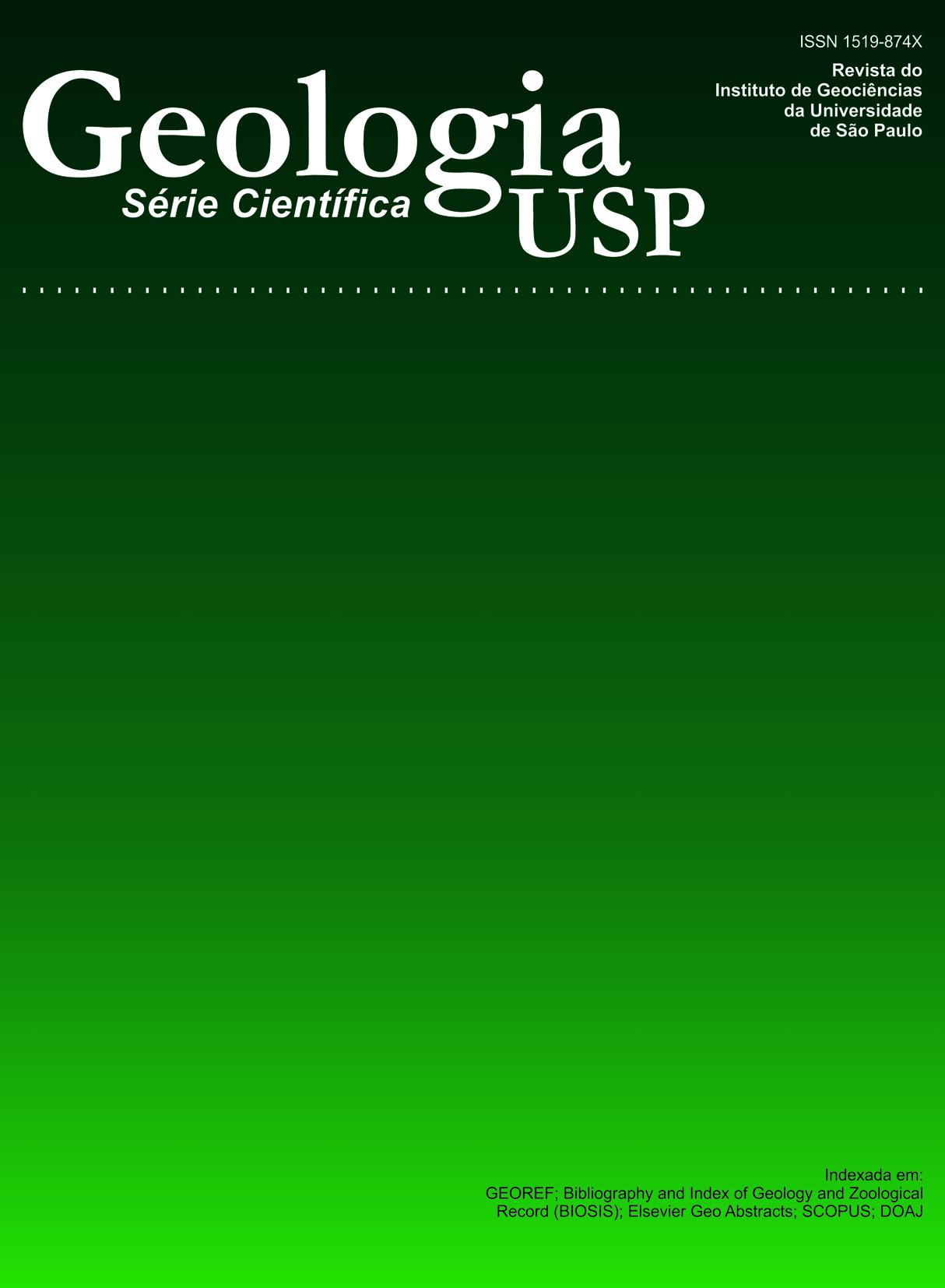Geology and chemical characterization of the ultrapotassic peralkaline magmatism of the Manaíra-Princesa Isabel Dike Swarm, Borborema Provine
DOI:
https://doi.org/10.5327/Z1519-874x2009000300002Keywords:
Borborema Province, Transversal zone, Ultrapotassic peralkaline magmatism, Enriched litospheric mantleAbstract
The Manaíra-Princesa Isabel dike swarm forms one of the most expressive examples of Neoproterozoic (c. 600 Ma) peralkaline magmatism in the Borborema Province (NE Brazil). It consists of about a hundred NE-trending bodies intrusive in older, Neoproterozoic porphyritic granites (Princesa Isabel and Tavares plutons), and orthogneisses and low-grade metasediments of the Eo-neoproterozoic Riacho Gravatá complex. The dike swarm includes mostly silica-saturated syenites, with potassic to ultrapotassic, peralkaline affinity, containing microcline and sodic amphibole ± pyroxene as the main mineral assemblage. Amphibole is dominantly Mg-riebeckite (Manaíra, Princesa Isabel and Tavares sub-swarms), whereas pyroxene is mainly aegirine-augite (Manaíra and Tavares sub-swarms). A minor set of dikes from this swarm is slightly metaluminous with Mg-biotite as the major mafic phase. Geochemical and isotopic signatures indicate strong enrichment in incompatible elements (Rb, Ba, K, Th, U), in association with a negative Nb anomaly, and strongly radiogenic 87Sr/86Sr and 143Nd/144Nd (= negative εNd values) initial ratios. These features suggest a common source, which was probably an enriched lithospheric mantle reservoir, chemically modified by an ancient subduction component inferred to be Paleoproterozoic from T DM model ages. Conversely, Pb isotopic ratios lower than average crustal values indicate the influence of a non-radiogenic component interacting with the enriched mantle source. A SHRIMP U-Pb age of c. 600 Ma obtained for the Manaíra-Princesa Isabel dike swarm defines an important crustal exhumation period which was relatively synchronous with intensive tectonomagmatic activity related to the Brasiliano orogeny, which occurred in distinct structural domains within the Transverse Zone of the Borborema Province.Downloads
Download data is not yet available.
Downloads
Published
2009-10-01
Issue
Section
Articles
License
Authors who publish in this journal shall comply with the following terms:
- Authors keep their copyright and grant to Geologia USP: Série Científica the right of first publication, with the paper under the Creative Commons BY-NC-SA license (summary of the license: https://creativecommons.org/licenses/by-nc-sa/4.0 | full text of the license: https://creativecommons.org/licenses/by-nc-sa/4.0/legalcode) that allows the non-commercial sharing of the paper and granting the proper copyrights of the first publication in this journal.
- Authors are authorized to take additional contracts separately, for non-exclusive distribution of the version of the paper published in this journal (publish in institutional repository or as a book chapter), granting the proper copyrights of first publication in this journal.
- Authors are allowed and encouraged to publish and distribute their paper online (in institutional repositories or their personal page) at any point before or during the editorial process, since this can generate productive changes as well as increase the impact and citation of the published paper (See The effect of Open Access and downloads on citation impact).
How to Cite
Hollanda, M. H. B. M. de, Mejía, C. P., Archanjo, C. J., & Armstrong, R. (2009). Geology and chemical characterization of the ultrapotassic peralkaline magmatism of the Manaíra-Princesa Isabel Dike Swarm, Borborema Provine . Geologia USP. Série Científica, 9(3), 13-46. https://doi.org/10.5327/Z1519-874x2009000300002





